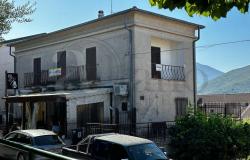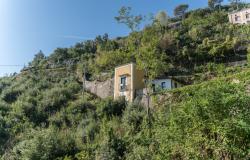 The late Italian tenor Luciano Pavarotti is sure to play a central role in the traditional nativity scenes which Neapolitans will set up at Christmas, according to one of the most famous makers of the figurines used in the creches.
The late Italian tenor Luciano Pavarotti is sure to play a central role in the traditional nativity scenes which Neapolitans will set up at Christmas, according to one of the most famous makers of the figurines used in the creches.
Giuseppe Ferrigno has already put on display his 40cm-high figures of 'Big Luciano' which show the tenor in tails, with a red scarf around his neck and his signature white handkerchief in his hand.
In his shop on the historic San Gregorio Armeno street, which is home to the city's figurine makers, Ferrigno has a photograph of himself and Pavarotti when the tenor visited him in 1994 while on tour in Naples.
"Knowing that he would visit, I created my first figurine of the 'Maestro' but out of respect I slimmed down his girth a bit," Ferrigno recalled.
"But when he saw it he told me his paunch was missing and so it didn't look like him at all!", he added.
"Later I made a another statuette and sent it to him at his home. When he married in 2003 (for the second time) I sent him a statue of Pulcinella," the artisan said.
Pulcinella, or Punch in English, is the masked clown-like character in traditional puppetry dating back to the Commedia dell'Arte in the 16th century.
Ferrigno said he was making a new Pavarotti figurine which he hoped to be able to send to his widow, Nicoletta Mantovani.
Commenting on the tenor's death on Thursday, Ferrigno said: "without a doubt it was a loss for all humanity".
The making of figurines for the nativity scene, known as a presepe, is a centuries-old tradition in Naples.
Aside from the scene's strictly nativity figurines, Neapolitans for over 200 years have included one representing people who made news during the year.
These now included politicians, entertainers and sportsmen.
The Neapolitan presepe has become something of an art form since the concept originally appeared in the 13th century.
It became highly fashionable in Rome in the 17th century, with nobles commissioning renowned artists to create their very own nativity scene.
However it was only in the 19th century that the presepe became a standard Christmas fixture for most homes, when poorer families created their own scenes with miniature chalk, terracotta and papier-mache figures.
The popularity of the presepe faded slightly in Italy during the 1960s when the imported concept of the Christmas tree provided an alternative domestic focus.
In recent years however, the scenes have regained their appeal.











